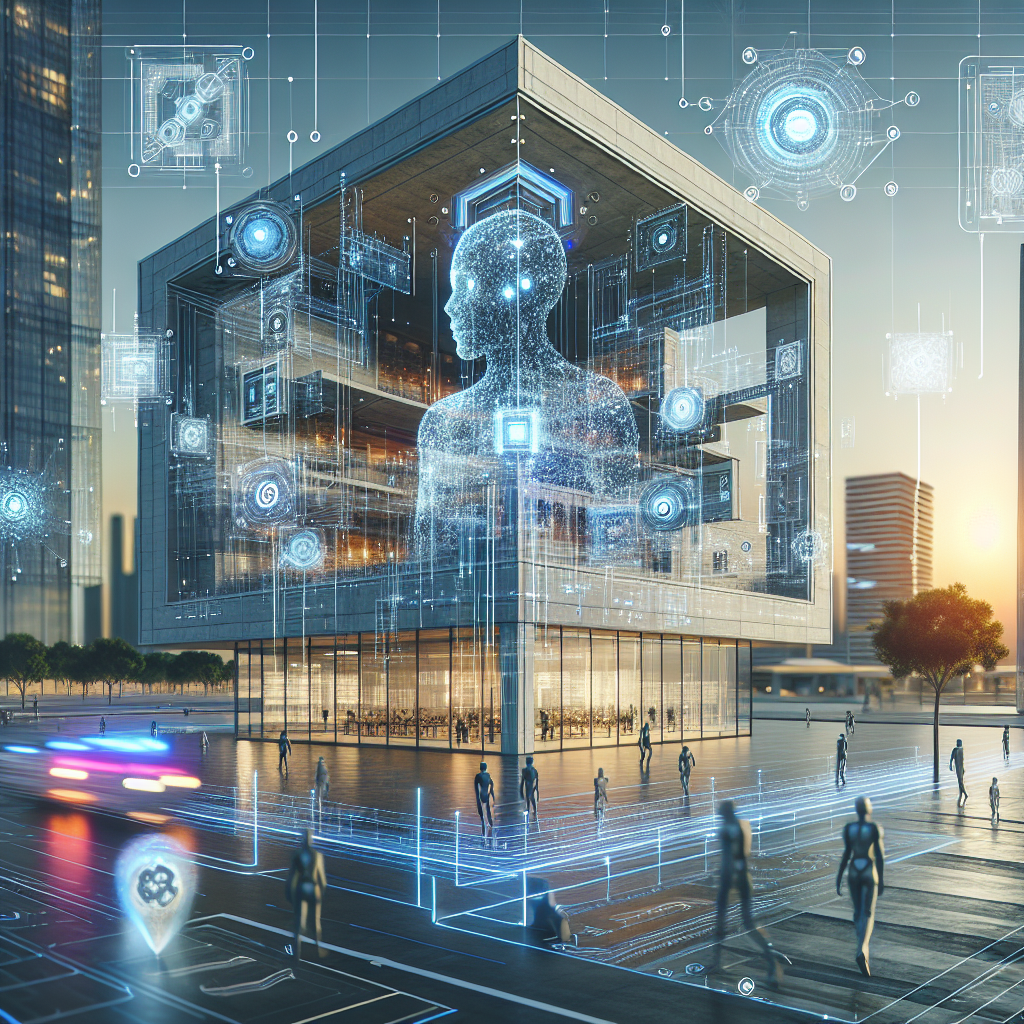Artificial Intelligence (AI) has been transforming industries across the board, and the field of architectural design is no exception. AI technologies are revolutionizing the way architects design, plan, and construct buildings, offering new opportunities for creativity, efficiency, and sustainability. From automated design processes to advanced simulation tools, AI is reshaping the architectural landscape in profound ways.
One of the key areas where AI is making a significant impact on architectural design is in the generation of design proposals. Traditionally, architects would spend hours creating initial design concepts by hand, sketching out ideas and exploring different possibilities. With AI-powered design tools, architects can now generate multiple design options in a fraction of the time. These tools use algorithms to analyze data, identify patterns, and generate design proposals based on predefined parameters. This not only speeds up the design process but also allows architects to explore a wider range of design possibilities and make more informed decisions.
AI is also being used to optimize building performance and sustainability. By analyzing data on factors such as building orientation, materials, and energy consumption, AI can help architects create more environmentally friendly and energy-efficient designs. For example, AI-powered simulation tools can predict how a building will perform in terms of energy usage and thermal comfort, allowing architects to make adjustments to improve efficiency and sustainability. This not only helps reduce the environmental impact of buildings but also saves on operating costs in the long run.
Another area where AI is transforming architectural design is in the realm of parametric design. Parametric design involves using algorithms to generate complex, customizable forms and structures. AI-powered parametric design tools can analyze vast amounts of data and generate intricate designs that would be impossible to create manually. This allows architects to explore new design possibilities and create innovative, avant-garde structures that push the boundaries of traditional architectural aesthetics.
AI is also being used to improve the construction process itself. By analyzing data on construction materials, techniques, and costs, AI can help architects and builders optimize the construction process, reduce waste, and minimize delays. For example, AI-powered construction management systems can predict potential issues before they arise, allowing for proactive problem-solving and smoother project execution.
Despite the many benefits of AI in architectural design, there are also some challenges and concerns to consider. One of the main concerns is the potential for AI to replace human creativity and intuition in the design process. While AI can certainly speed up the design process and offer new design possibilities, there is a risk that it could lead to a homogenization of architectural styles and a loss of individual expression. It is important for architects to strike a balance between the use of AI tools and their own creative vision to ensure that their designs remain unique and innovative.
Another concern is the ethical implications of AI in architecture. As AI becomes more integrated into the design process, there are concerns about issues such as data privacy, bias in algorithmic decision-making, and the impact on jobs in the architectural industry. Architects and designers must be mindful of these ethical considerations and work to address them in their use of AI technologies.
Overall, the impact of AI on architectural design is profound and far-reaching. From automated design processes to advanced simulation tools, AI is revolutionizing the way architects design and construct buildings. By harnessing the power of AI, architects can create more efficient, sustainable, and innovative designs that push the boundaries of traditional architectural practice.
FAQs:
1. How is AI being used in architectural design?
AI is being used in architectural design in a variety of ways, including generating design proposals, optimizing building performance and sustainability, parametric design, and improving the construction process.
2. What are some of the benefits of using AI in architectural design?
Some of the benefits of using AI in architectural design include speeding up the design process, exploring a wider range of design possibilities, optimizing building performance and sustainability, and improving the construction process.
3. What are some of the challenges of using AI in architectural design?
Some of the challenges of using AI in architectural design include the potential for AI to replace human creativity and intuition, ethical concerns such as data privacy and bias, and the impact on jobs in the architectural industry.
4. How can architects ensure that their designs remain unique and innovative when using AI?
Architects can ensure that their designs remain unique and innovative when using AI by striking a balance between the use of AI tools and their own creative vision, and by being mindful of ethical considerations and working to address them in their use of AI technologies.

